Week 2 - BROTH SOUPS
- Chang Pinky
- Jan 11, 2023
- 4 min read
Updated: Jan 23, 2023
List the method of cookery and dishes to be covered in class
This week we are going to learn about making vegetable stock and broth soups, specifically minestrone.
List your learning objectives for the class
After this lab, I hope to master knife skills when chopping vegetables. Even more important is how to measure the ingredients correctly.
Discuss your prior knowledge of the content
Making vegetable stock is not too difficult for me because I have done it quite a lot already. Minestrone soup seems quite new to me. I have only made chicken mushroom soup before, hope that experience will help me make this dish smoothly.
Background Information
Research and discussion of method of cooking
The most time-consuming step in vegetable stock is simmering. Besides, timing each step properly is also something to keep in mind.
According to Cookieandkate.com, "minestrone is a hearty Italian vegetable soup made with tomato-y broth and pasta or rice, which was traditionally made to use up leftover vegetables." After reading through recipes and learning about minestrone soup from several sources, I can imagine cooking this dish is not too complicated. However, to make it easier, we need to prepare all the ingredients before cooking and add them to the dish at the right time.
Research and discussion of dishes
For historical dishes
The origin of minestrone soup, according to Yummefy.com, "minestrone soup dates back to before the time of the Roman Kingdom when a vegetarian diet was followed. The meals would consist of savory spelt flour porridge to which vegetables were added. In the 2nd Century B.C., Italy was introduced to a range of products when it was conquered by Rome. The ancient cookbook De Re Coquinaria by Marcus Apicius has a soup called polus, dating back to 30 AD. It was prepared with farro, chickpeas, fava beans, onions, garlic, lard, and greens thrown in. Since then, minestrone has changed time and again, and acquired its current definition."
For cooking methods
The method of cooking minestrone soup is mainly simmering, then just keep it small to medium heat. Next to that is the saute method. We sautee the onions, celery, zucchini, and carrots in a saucepan with oil and over medium heat. The ingredients will be cooked together in a mixture, we need to adjust the amount of liquid by adding stock.
Dish/method variations
There are many variations of minestrone soup, as long as we change the ingredients a little, we have minestrone soups with different flavors. For example, Marcella Hazan's Minestrone alla Romagnola, we can skip pasta and call for potatoes, as well as lots of cabbage and diced green beans.
As for the cooking method, there is no difference between the variations of minestrone soup.
Recipes
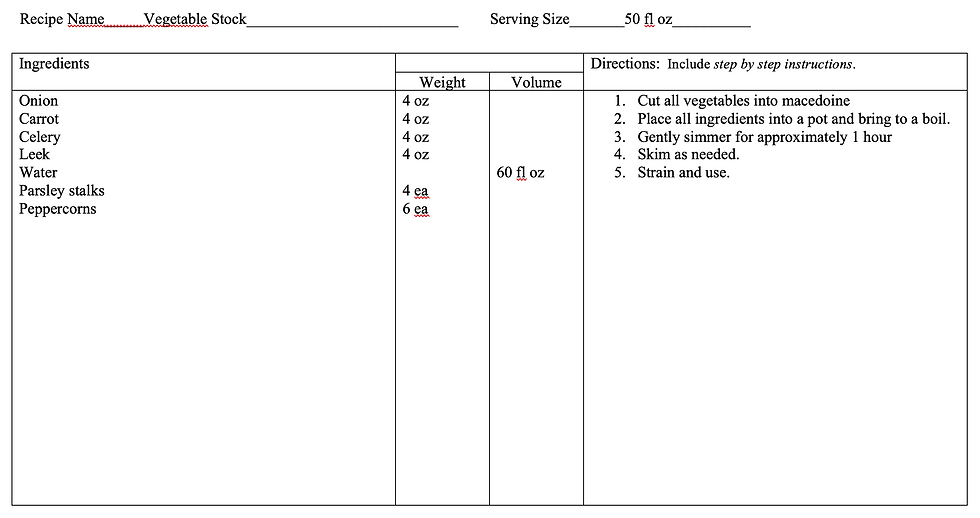
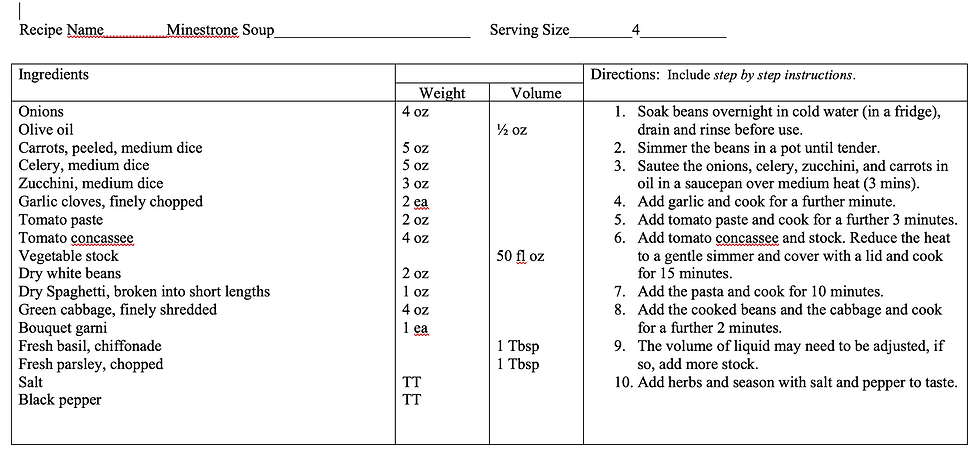
Plan of Work
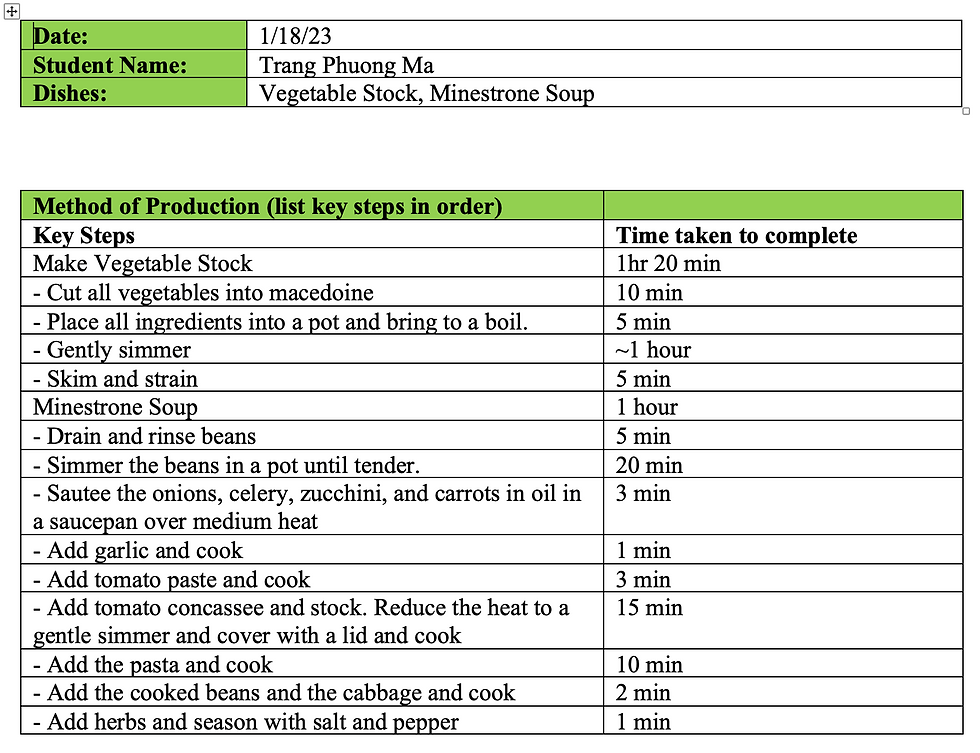
Result
Describe how well the technique/cooking method worked
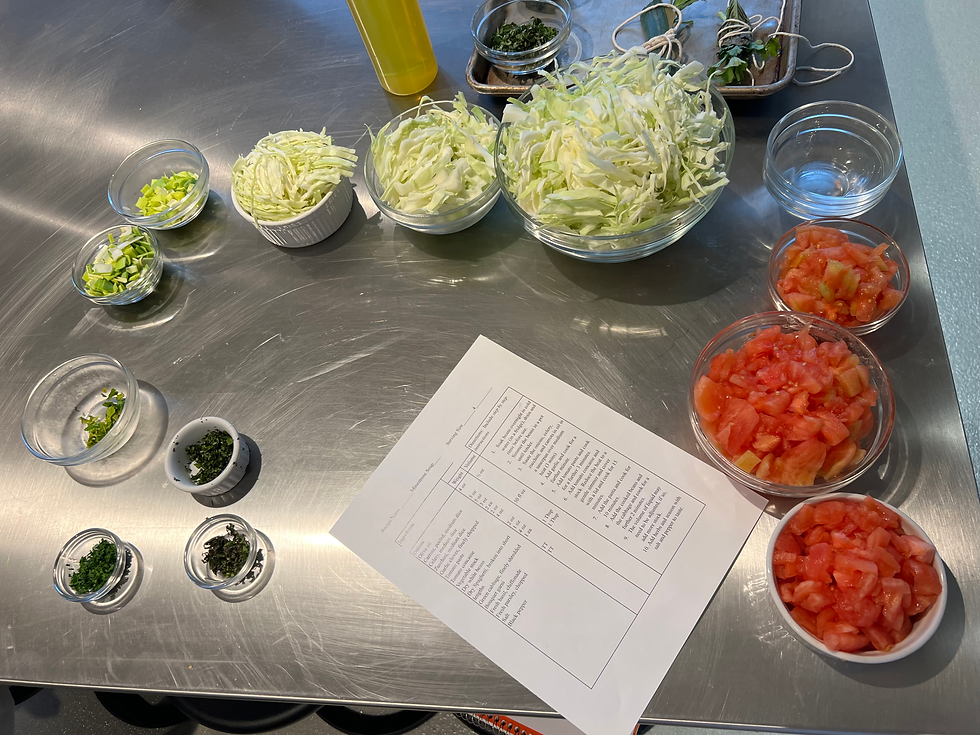
In general, the method of cooking minestrone soup was not too complicated, so it was completed well. The two steps that took the most time were mise en place and cooking soup. After learning knife skills, we immediately applied them to the vegetable cutting step and everything became so easy. Then we lightly sauté the onions, celery, zucchini, and carrots until they were a little softer then we poured them into the pot that was boiling the beans. After adding all the necessary ingredients, we got a pot of soup like this picture. While waiting for the liquid to boil, we sauté some bacon until it turned golden brown and a little less fat.
Describe the sensory results of the dish
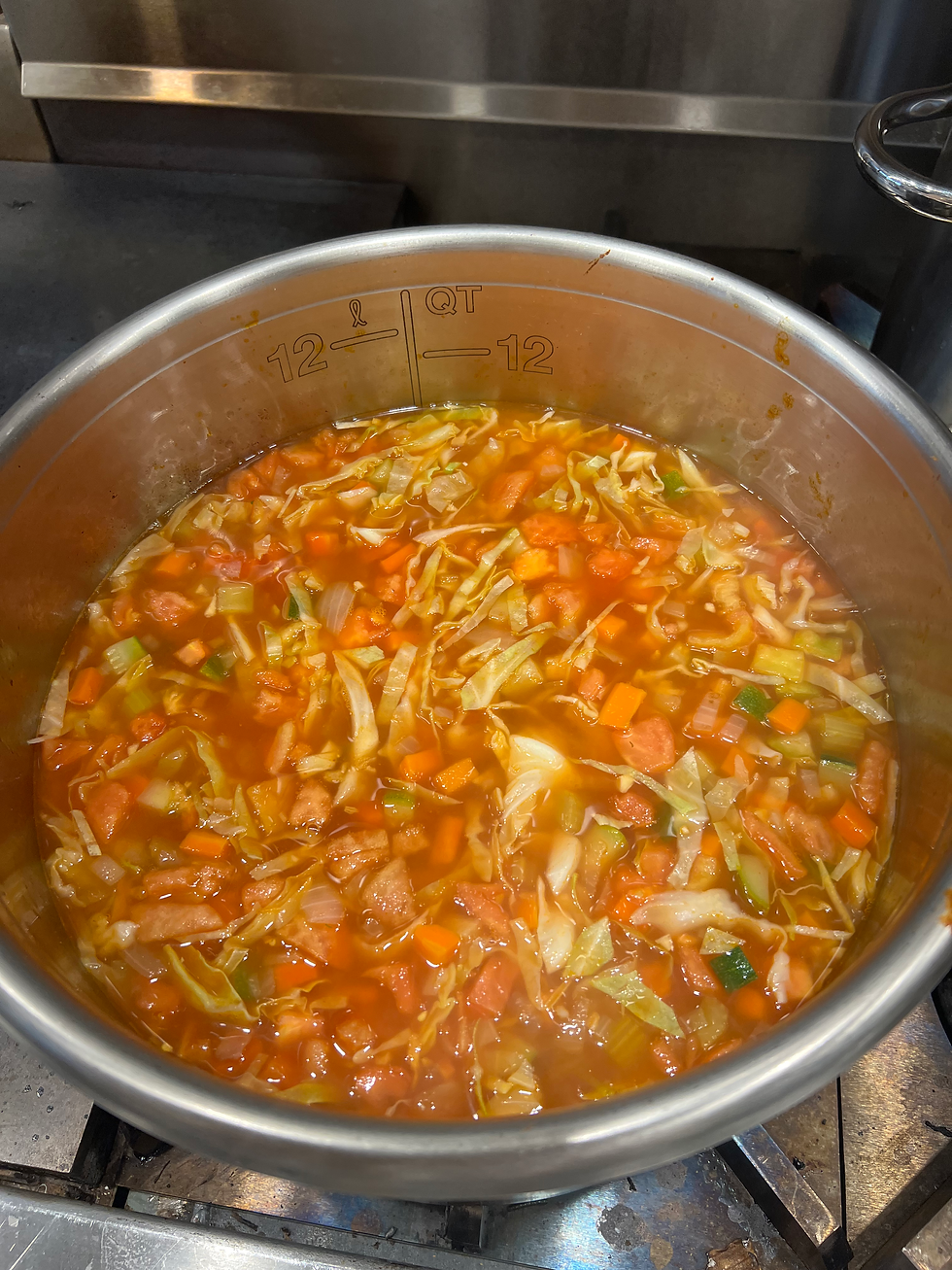
Taste: The soup has a refreshing taste which is very suitable for summer, especially the
overwhelming sourness of tomatoes. In my personal opinion, the taste of the soup is not highly-seasoned because it lacks a lot of salty taste from salt so it is quite bland and sour.
Flavor: The minestrone soup we cooked this time has the full flavor of different vegetables, such as celery, carrots, zucchini, cabbage, and so on. Since one of our group had a gluten allergy, we did not add pasta to the minestrone soup. Maybe because of this, the flavor was not very complete. Besides, the soup was also a bit more watery than we expected, possibly because we did not adjust the liquid amount correctly. However, overall the soup was still fine and aromatic
Texture: Our minestrone soup this time was a little diluted, but still had a thick, hearty texture due to the combination of vegetables, beans, and pasta that were cooked in a rich, tomato-based broth. In addition, the vegetables were ripe and tender.
Appearance: The broth was a warm red and orange color, due to the use of tomatoes as a base, with a variety of colorful vegetables, such as tomatoes, carrots, zucchini, and cabbages, mixed in with beans. The soup had a little chunky appearance and was slightly brown from the bacon.
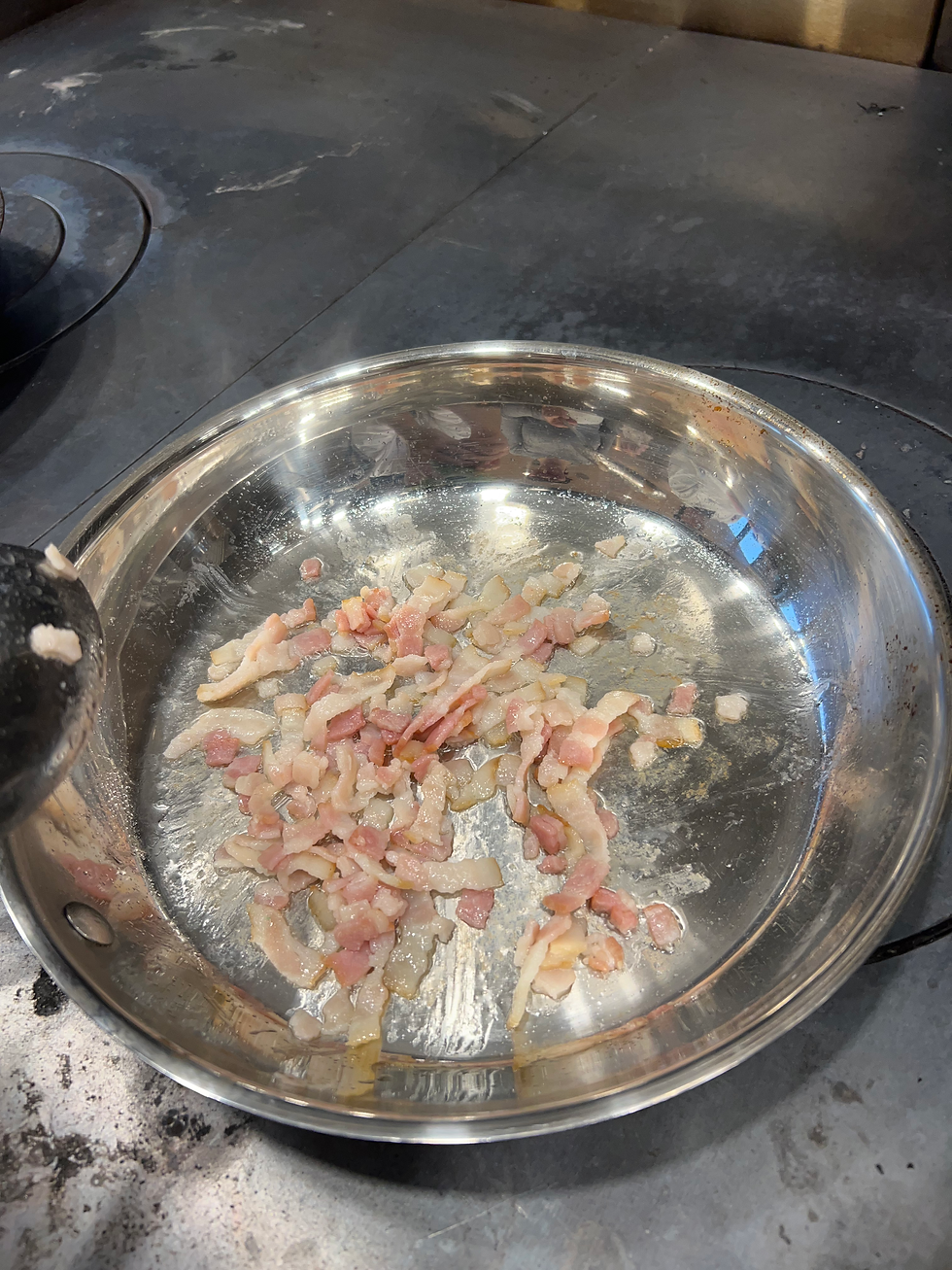
Evaluation of results
Discuss the techniques that did work well
In my opinion, we had done very well with the mise en place steps, when all ingredients were fully prepared, in the right amount and the vegetables were cut exactly as directed in the recipes. Besides, the manipulation of adding ingredients to the soup mixture is time-aligned one by one the heat was also adjusted appropriately during the cooking time.
Discuss the techniques that did not work well
There are two methods that we had not done well: aligning the amount of liquid and adding seasoning. As I said above, the texture of the soup was quite thin, because the amount of water seemed to be a bit too much. Besides, the spices were added just before the end of cooking, which were salt and pepper, but they were still not enough to be so good.
Discuss the particular improvements and changes that could be implemented to improve the outcomes
Adjusting the right amount of water and adding seasoning is what we need to improve to make minestrone soup better.
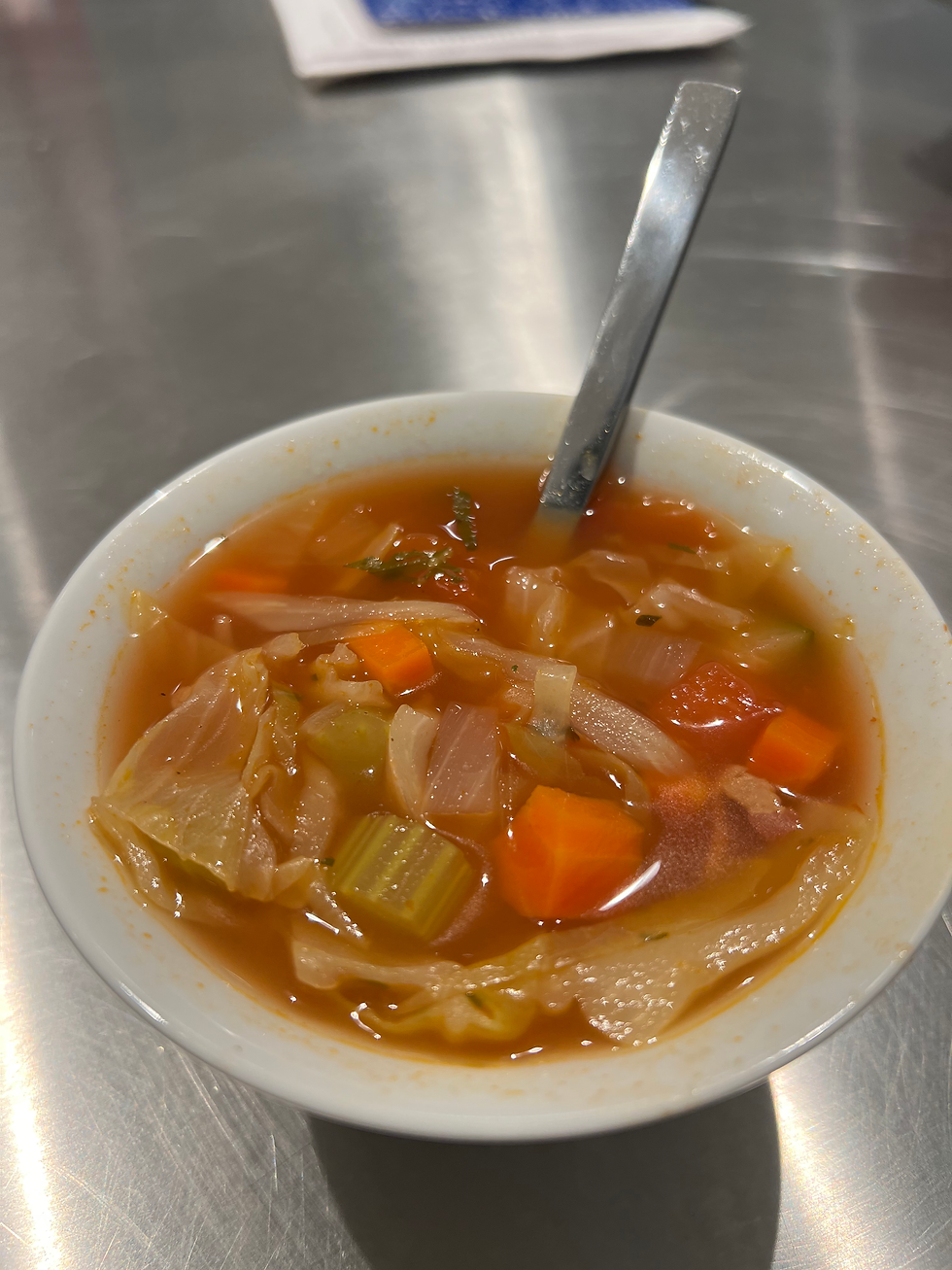
Conclusions
In conclusion, learning about making vegetable stock and minestrone soup has been a valuable experience. Vegetable stock is a versatile and essential ingredient in many recipes, and it is easy to make at home with a variety of vegetables and aromatics. Minestrone soup is a classic Italian dish that is hearty, filling, and packed with flavor and nutrition. By understanding the methods and techniques for making these two dishes, we can now incorporate them into our own cooking and experiment with different variations. Overall, this class has provided me with a deeper understanding of the importance of using fresh, high-quality ingredients and how to create delicious and healthy dishes.




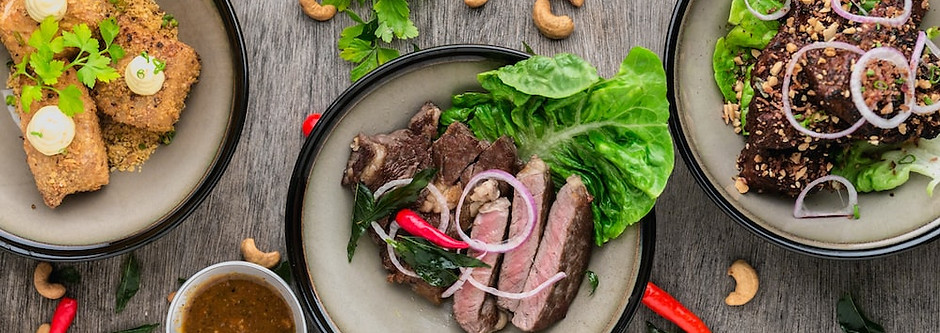
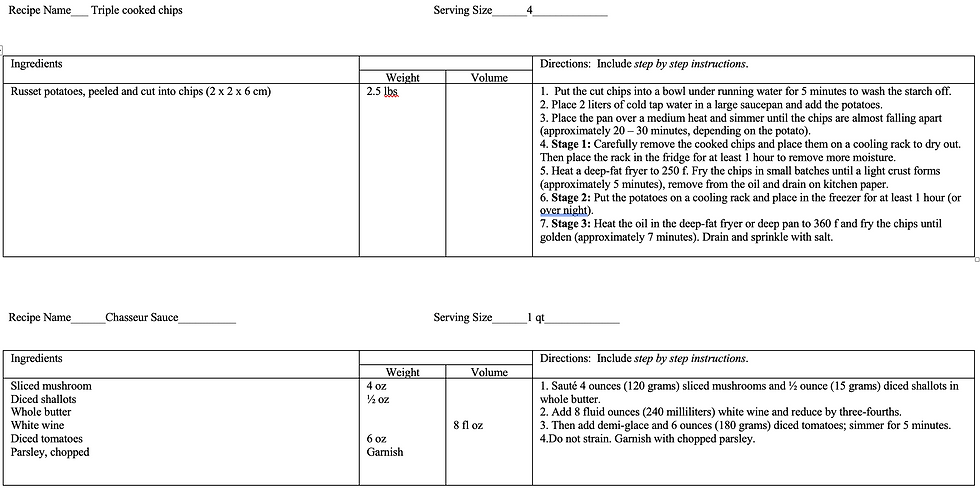
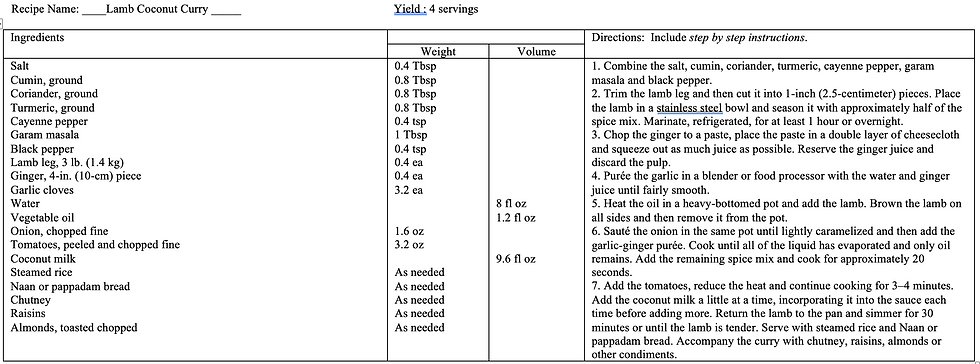

Comments